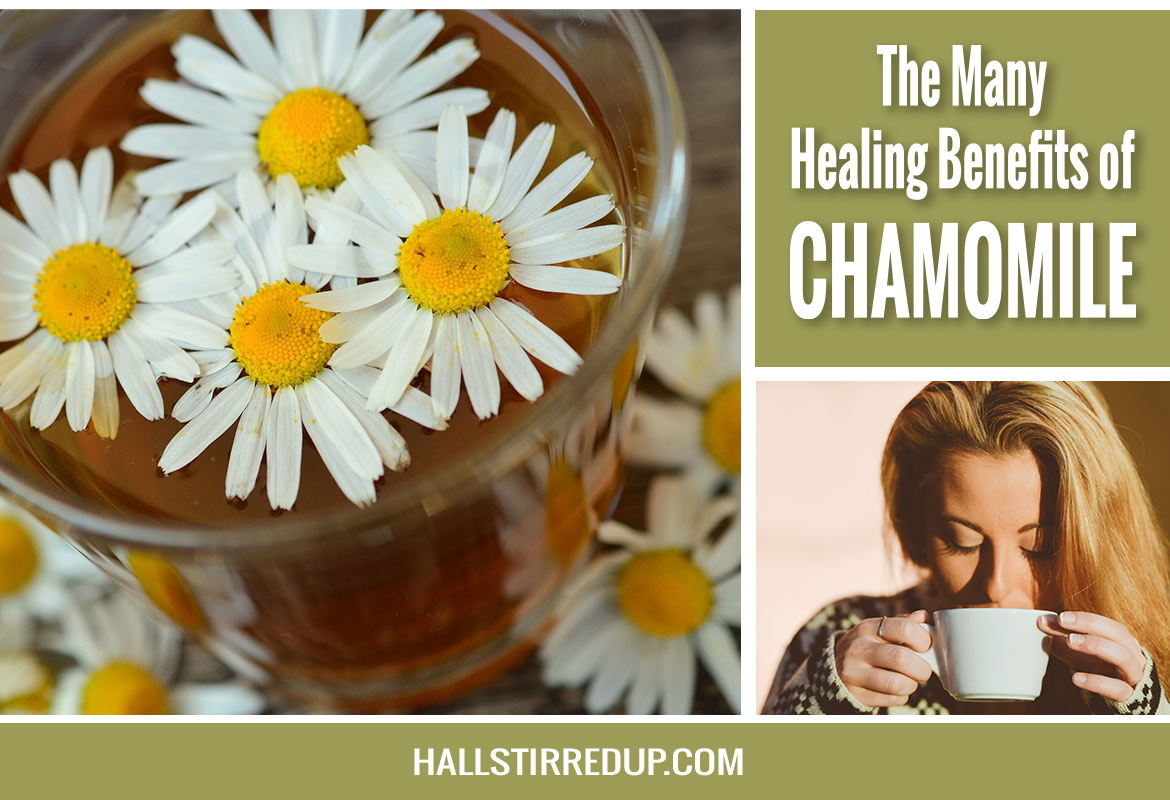
The Many Healing Benefits of Chamomile
Herbs are terrific for cooking, but that’s not the only reason to use them. Many common herbs have been scientifically proven to enhance our health, often as effectively as synthetic compounds. I’ve written posts about Rosemary and Turmeric, and talked about how to grow your own medicinal herbs in pots. And in this post, I want to talk about the benefits of Chamomile.
I’ve waited to post about Chamomile because I thought it would be a great way to kick off the first of my series about edible flowers. So often we use a plant’s leaves and roots rather than the flowers, but Chamomile is the perfect example of an herb and edible flower that’s both pretty and medicinal.
The many healing benefits of Chamomile
Most of us know that Chamomile is made into an herbal tea by drying the flowers and steeping them with a tea bag or a tea ball into hot water. Chamomile has a soothing aroma and taste and, because it doesn’t contain caffeine, many find it helps them sleep. Besides it’s ability to help us at bedtime, Chamomile also has many other medicinal properties.
Calms nerves
Chamomile has a general calming effect on the nerves, and helps with chronic stress and anxiety, or just to relax after a hard day. Also, because chamomile doesn’t contain caffeine, LearningHerbs.com recommends rubbing children’s gums with chamomile tea when teething to help reduce gum inflammation.
Soothes sore muscles
Llewellyn’s Herbal Almanac recommends combining chamomile with other herbs and jojoba oil to make a body rub for soothing sore muscles or relaxation.
Protects against food-borne illness and the common cold
While drinking chamomile tea can be soothing, a 2010 study published in Molecular Medicine Reports suggests that inhaling steam from this herbal tea may help combat the common cold. An article published in National Institute of Health found that Chamomile may also help to combat food-born illnesses.
Controls blood sugar
A 2008 study published in the Journal of Agricultural and Food Chemistry found that a daily cup of Chamomile tea may help to prevent diabetic complications, including high blood sugar. This doesn’t mean the tea can replace insulin, but it does suggest that drinking Chamomile tea daily may help your body to self-regulate glucose levels.
Antioxidants fight cancer
While Chamomile tea on it’s own may not protect you from cancer, incorporating a cup of tea into a diet rich with other antioxidants can help. In yet another article from the National Institute of Health, this herb was found to contain high volumes of antioxidants, which is thought to combat various diseases including cancer and heart disease.
Growing and using Chamomile
While Chamomile grows wild in many areas in the United States and Europe, it does resemble some unrelated weeds. Be sure to consult an expert before trying to ingest any plant that you didn’t purchase from a reliable source.
If you’d like to grow your own, you can buy starter plants from online websites, garden centers and greenhouses. Additionally, the tea is widely available from most grocery stores and health food stores.
Keep in Mind
There are virtually no reported ill side-effects of chamomile, but severe allergic reactions have occurred in those who were also allergic to ragweed. This may be caused by cross pollination, so be cautious if you’re allergic to ragweed, especially if you’re growing your own plants.
Enjoy this natural herb
Chamomile is an accessible resource for a healthy lifestyle, and you can reap the benefits as easily as making a soothing cup of tea!
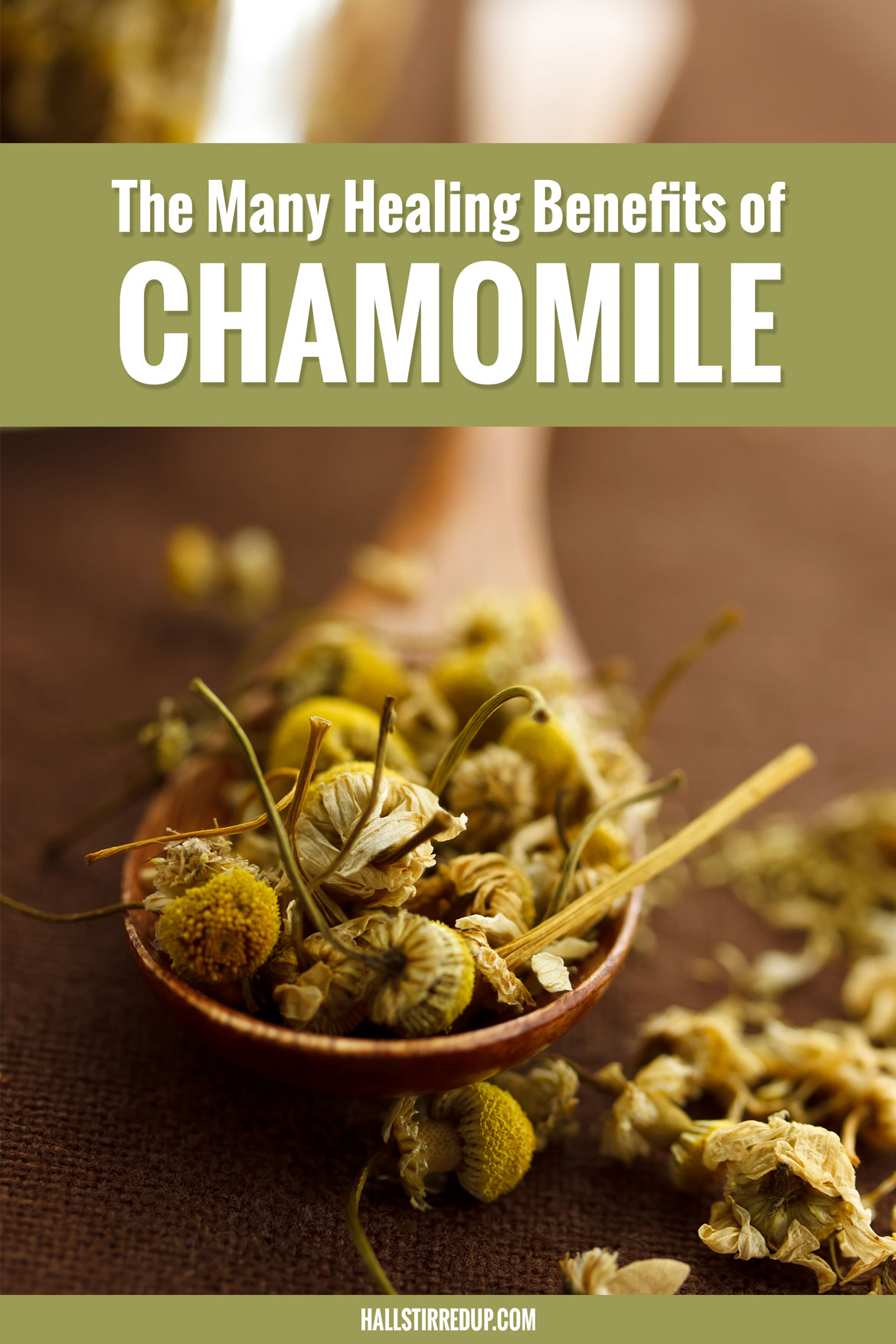
This information is presented as entertainment and not meant to diagnose or treat any illness or disease. Always consult your medical professional before adding anything new to your diet or regimen.
Be Sure to Sign Up~
Before you go, click here to sign up! Subscribers receive post updates, direct links to my newest free printables and an exclusive digital desktop wallpaper of each month’s featured printable. Digital wallpapers are only available during the current month, so don’t miss out!
Learn about 5 spices that boost digestion
Read about 4 key nutritional benefits of using herbs
Check out my fun infographic Medicinal Herbs to Grow in Pots
Sources:
herbslist.net
learningherbs.com
webmd.com
ncbi.nlm.nih.gov
lawtonent.com
acs.org
draxe.com
ncbi.nlm.nih.gov
farmersalmanac.com
Llewellyn’sHerbalAlmanac
encyclopedia.com
learningherbs.com
ncbi.nlm.nih.gov
doi.org/10.1111
molmedreport
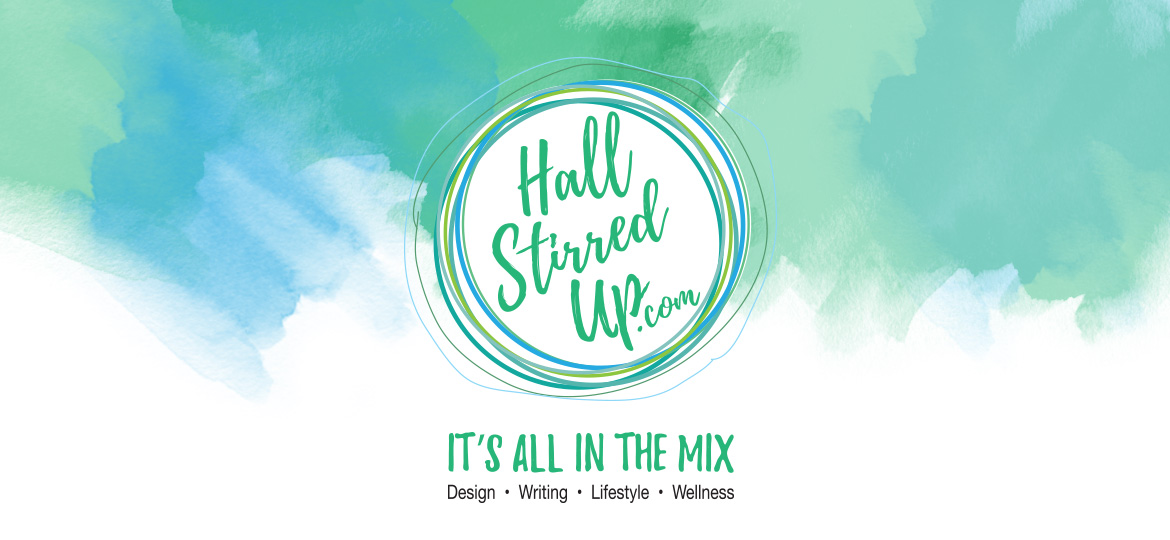
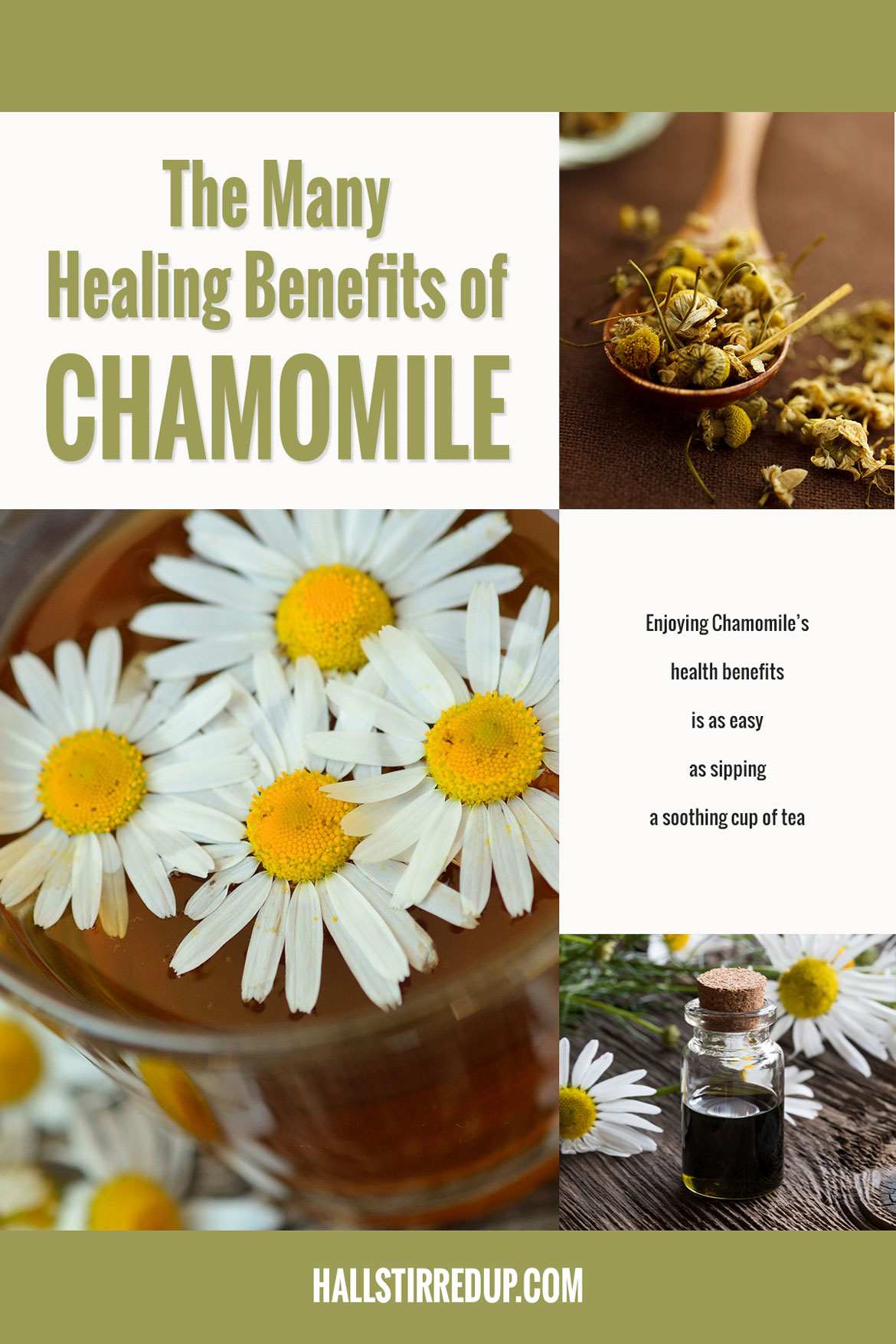
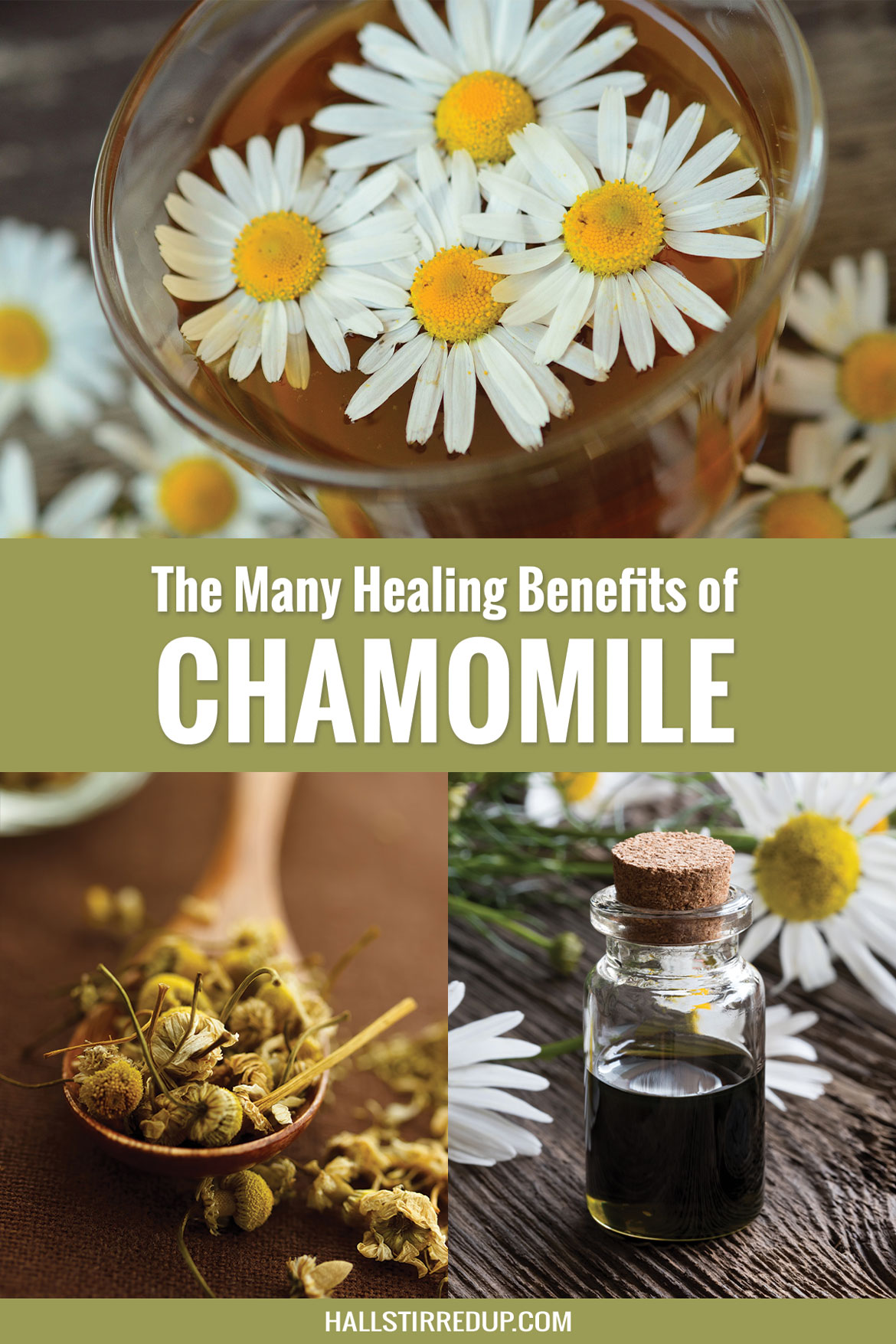
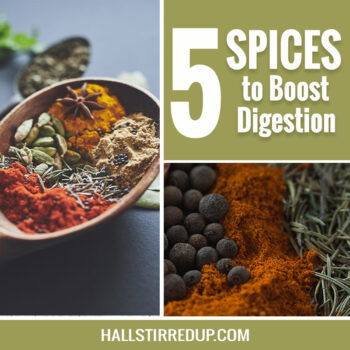
Leave a Reply